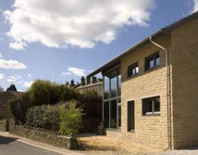
An English architect has created a genuine "passivhous," using conventional building methods like cavity wall construction. At current exchange rates, the owner will spend a little over $100 a year to heat and cool this house. Read More...

An English architect has created a genuine "passivhous," using conventional building methods like cavity wall construction. At current exchange rates, the owner will spend a little over $100 a year to heat and cool this house. Read More...

Because of this doctor's work in the 1970's, the percentage of children aged 1 to 5 with what the CDC considers dangerously high levels of lead in their blood has declined from 77.8 percent to 1.6 percent. We can only hope that 40 years from now, we'll see other chemicals in similar decline. Read More...

In the spring of 2009, stories began to appear in the press about Chinese drywall that was so toxic that it corroded copper pipes and wiring, and made people and animals who lived in the houses where it had been installed chronically ill. Silver and brass tarnished. The air smelled like rotten eggs. Most... Read More...

If you question Pakistan's belligerence against India, look at how India is treating their joint water sources. It's a story that's repeating around the world. Read More...

This article in the Rocky Mountain Institute's journal really spells out how the best green building approach -- the one that also yields the greatest cost savings -- is the integrated one, where all a building's systems are taken into account before the retrofit starts. Read More...

This story in the NY Times spells out the energy spent through water use, and the enormous potential, with double benefits, of bringing water-use down. Read More...

Here's another form of renewable energy for warm climates: using the difference between the ocean's surface temperature and the near-freezing temperature of its deeps to generate electricity. All it takes is a 20C/36F-degree difference. Read More...

Early in the 20th Century, western architects were using green roofs, wind chimneys and solar blocking to regulate building temperatures in hot climates. Use this short article in The Times of India as a guide to reading about early users of these sustainable methods. Read More...

Scientific American's short article on the recent drop in water vapor in the stratosphere mainly tells us how little we really know about global warming, even as vast glaciers melt and the oceans warm and rise. Read More...

This is the Executive Summary for "Mind, Disrupted," a detailed and well-supported report on the mental effects of our national exposure to toxic chemicals, with a link to the full report. Read More...